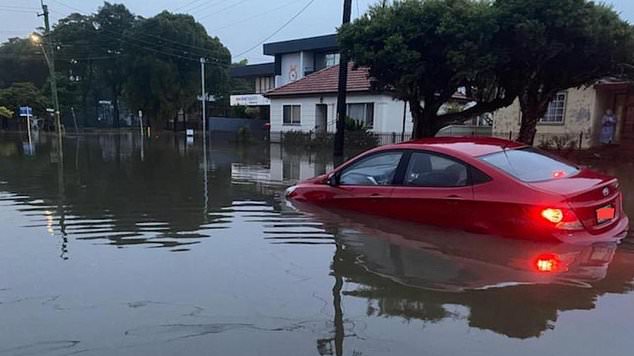Warning by disaster agency that Aussies could be in for more extreme weather throughout spring
Australia’s national disaster agency is bracing for warmer, wetter and windier weather as the country moves further into spring.
The National Emergency Management Agency (NEMA) on Friday published a higher risk forecast for the coming quarter.
In much of Australia, winter temperatures were ‘well above average’, a trend that is expected to continue in the warmer months.
The agency said there was an increased “fire risk for parts of northern Australia and the south-east of the country during the period September to November 2024.”
Areas at increased risk include parts of western Victoria and part of South Australia.
But the greatest threat lay in the north, where large parts of Queensland and the Northern Territory were at risk.
Major regional centres were within the high-risk zones, including Alice Springs and Tenant Creek in the Northern Territory and Mount Isa, Townsville and Cairns in Queensland.
NEMA noted, however, that this is not a reason to relax vigilance in areas where the risk has not shifted.
Australia’s disaster management agency warned that spring could bring extreme weather (Photo: Black Summer bushfires)

Spring is expected to bring warm weather along with significant rainfall (a flight over a fire near Elmhurst)
“Areas with normal wildfire risk can still experience devastating and deadly fires,” the agency said.
Above-average rainfall was also expected for eastern and central parts of the country, while lower than average rainfall was expected for large parts of Western Australia and western Tasmania.
But fire was not the only increased risk.
Because there was a high level of moisture in the soil in the east and centre of the country and above-average rainfall was expected, flooding was also a major risk.

The agency is preparing for bushfires and floods (pictured: flooding in northern New South Wales)
“Current soil moisture levels and forecast rainfall and runoff indicate that parts of eastern Australia are at increased risk of flooding in November,” NEMA said.
‘More rain on wet ground means a greater risk of high runoff and flooding.’
The agency’s forecast was based on data collected by the Bureau of Meteorology.
